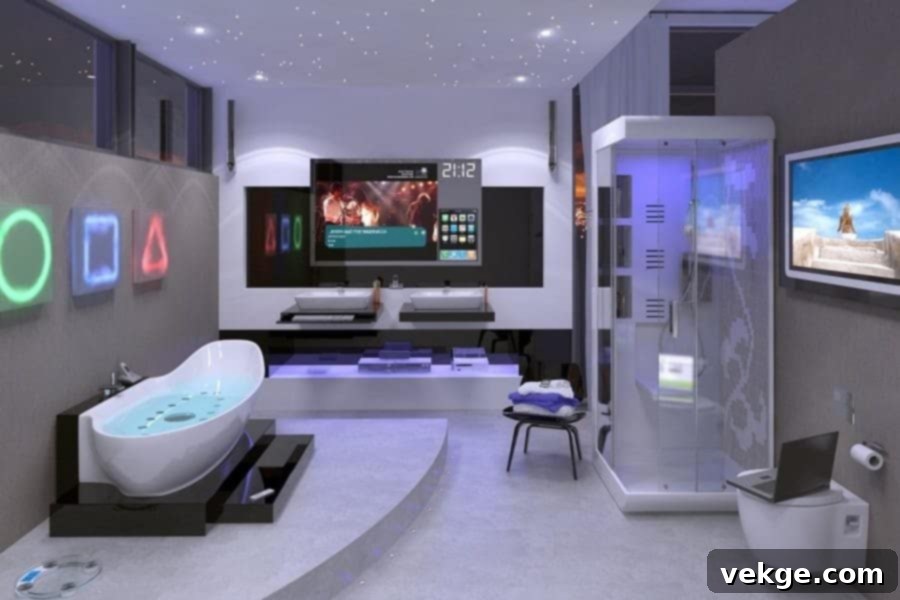Maximizing Your Home Renovation Budget: Smart Strategies for Cost-Effective Updates
Embarking on a home renovation journey is often a mix of exhilarating dreams and daunting financial realities. The vision of transforming your current living space into your ultimate dream home is incredibly exciting, yet the associated costs can accumulate surprisingly fast. To ensure your renovation project remains a source of joy rather than financial stress, mastering the art of wise budgeting is absolutely essential.
Regardless of whether you’re planning a minor refresh for a single room or undertaking a comprehensive whole-house remodel, there are proven strategies to help you stretch every dollar. This ultimate guide is designed to equip you with practical financial tips and smart approaches, enabling you to maximize your home renovation budget effectively. We’ll explore each area of your home, offering tailored advice to make the most impact without overspending, ultimately enhancing both your living experience and your property’s value.
Strategic Planning: Focus on High-Impact Areas First
When allocating your renovation budget, it’s a smart move to prioritize the rooms that experience the most daily use. High-traffic areas, such as kitchens and bathrooms, typically show signs of wear and tear much faster than other parts of your home. Directing a significant portion of your budget towards these crucial spaces can yield a substantially higher return on investment (ROI), both in terms of your everyday comfort and enjoyment, and your home’s potential resale value.
Cost-Effective Kitchen Transformations
The kitchen is often considered the heart of the home, and it’s also where renovation costs can quickly escalate. However, with careful planning, you can achieve a stunning update without a hefty price tag. For instance, instead of fully replacing custom cabinets, consider more affordable, semi-custom options or even refinishing or refacing your existing cabinetry if their structure is sound. A fresh coat of paint, new hardware, and updated lighting can dramatically alter the look and feel of your kitchen, creating a modern aesthetic without the expense of a complete tear-out.
Another area for smart savings is appliances. While high-end models offer advanced features, energy-efficient standard models can provide excellent functionality and long-term savings on utility bills. When selecting countertops, explore options like laminate, butcher block, or even concrete, which offer stylish alternatives to pricier natural stone or quartz. Small details, like a new backsplash or upgraded faucet, can also make a significant difference in refreshing your kitchen’s appeal.
Smart Updates for Modern Bathrooms

Bathrooms, much like kitchens, are high-impact areas where thoughtful choices can lead to substantial savings. Rather than opting for a complete overhaul, focus on targeted updates that provide the most visual and functional improvements. Replacing outdated fixtures, installing modern lighting, or swapping out worn tiles can create a fresh, contemporary look without the extensive cost and disruption of a full remodel.
Consider low-flow toilets and showerheads, which not only reduce your water consumption but also contribute to lower utility bills over time. Updating your vanity can transform the space; if the existing one is functional, a new countertop, sink, and faucet might be all you need. For tiling, explore larger format tiles or even peel-and-stick options for a DIY-friendly and budget-conscious update. Painting the walls a new color can also dramatically brighten and modernize a bathroom for a minimal investment.
When planning updates for both kitchens and bathrooms, always keep energy and water efficiency in mind. While energy-efficient appliances and water-saving fixtures might have a slightly higher upfront cost, they lead to considerable savings on your utility bills over the lifespan of your home, making them a wise long-term investment.
Utilizing Financial Tools for Robust Planning
Effective financial planning is the cornerstone of a successful, budget-friendly renovation. As you consider the various updates, it’s paramount to think strategically about how to maximize every dollar. A practical tool that can significantly aid this process is a savings interest calculator. By utilizing such a calculator, you can gain a clearer understanding of how your accumulated savings will grow over time, especially if you decide to save a portion of your renovation budget in advance.
Beyond simply saving, creating a detailed budget spreadsheet is crucial. This spreadsheet should itemize every single expense, from materials and labor to permits and unexpected contingencies. Allocate a contingency fund, typically 10-20% of your total budget, to cover unforeseen issues that inevitably arise during renovations. This proactive approach prevents budget overruns and ensures peace of mind.
Furthermore, this tool can help you determine the optimal time to make larger purchases or investments, ensuring you’re not depleting your savings all at once. By strategically aligning your renovation expenses with your savings growth, you can make the most of your budget, enabling more significant projects or allowing for higher quality finishes where it matters most.
Elevating Living Rooms and Bedrooms with Simple Changes
For living rooms and bedrooms, the primary focus should be on creating comfortable, aesthetically pleasing, and inviting spaces. Here, relatively simple changes can yield surprisingly significant impacts. One of the most cost-effective transformations is a fresh coat of paint. A new color scheme can dramatically alter a room’s ambiance, making it feel more spacious, cozy, or modern, all for a modest investment in materials.
Beyond paint, consider updating the room’s look with new window treatments, such as stylish curtains or blinds, which can instantly refresh a space. New area rugs can define zones, add warmth, and introduce texture and color. Upgraded lighting fixtures, including floor lamps, table lamps, and ceiling lights, can create layers of illumination, enhancing both functionality and mood. For a more substantial, yet still budget-friendly, change, explore options like built-in shelving or creating a feature wall with wallpaper or unique paint effects. These types of updates are often far less expensive than structural changes but can add considerable value, character, and appeal to your home.
Transforming Underutilized Basements and Attics
Moving to less conventional but highly valuable spaces like basements and attics presents unique opportunities to expand your home’s usable footprint. Transforming these often-underutilized areas into functional living spaces can significantly increase your home’s square footage and overall value. A basement, for instance, can become a comfortable family room, an additional guest suite, a home office, or even a rental unit for extra income.
When working with these foundational spaces, prioritize essential repairs and improvements. Focus initially on ensuring they are dry, well-insulated, and structurally sound. Addressing issues like waterproofing, proper ventilation, and insulation is critical before embarking on any aesthetic changes. Simple yet durable flooring solutions, such as luxury vinyl planks (LVP), laminate, or carpet tiles, can make a huge visual difference without the hefty price tag of traditional hardwood or ceramic tiles.
In the attic, adding or upgrading insulation is a top priority. Not only does superior insulation make the space far more comfortable, but it also dramatically improves your home’s overall energy efficiency, leading to long-term savings on heating and cooling. Once adequately insulated and weatherproofed, consider converting the attic into a functional home office, a dedicated gym, an extra bedroom, or a creative studio. These types of conversions typically offer an excellent return on investment, as they add valuable living space to your home.
For both basement and attic renovations, planning around the existing layout and infrastructure can yield significant cost savings. For example, positioning a new bathroom or kitchenette near existing plumbing lines drastically reduces the need for extensive, costly pipework and structural modifications.
Cost-Effective Outdoor Renovations for Enhanced Curb Appeal
The exterior of your home and its outdoor spaces play a crucial role in its overall appeal and market value. Investing in your home’s curb appeal and creating functional outdoor areas can provide a wonderful space for relaxation, entertainment, and a strong first impression. Fortunately, outdoor renovations don’t have to drain your bank account.
Begin with low-cost, high-impact updates. A fresh coat of paint on your front door, adding vibrant new plants and flowers to garden beds, or installing modern house numbers can instantly elevate your home’s exterior. Consider pressure washing your siding, driveway, and walkways to remove grime and refresh surfaces. If you’re contemplating larger projects like building a new deck or patio, explore cost-effective materials that still offer durability and aesthetic appeal. Composite decking, for example, often provides an excellent balance between cost, appearance, longevity, and low maintenance compared to traditional wood. Simple landscaping, like mulching beds or planting small trees, can also add significant value over time.
Embracing DIY Where Possible to Save Significantly
One of the most direct ways to reduce renovation costs is by undertaking some of the work yourself. DIY projects can lead to significant savings on labor costs, provided you possess the necessary skills, tools, and time. However, it’s paramount to be honest about your limitations. Tasks involving complex plumbing, intricate electrical work, or structural modifications should almost always be entrusted to qualified professionals.
Poorly executed DIY work in these critical areas can lead to expensive repairs, safety hazards, and potentially negate any initial savings. Instead, focus your DIY efforts on projects that are within your comfort and skill level, such as painting, basic landscaping, installing new light fixtures, replacing cabinet hardware, or assembling flat-pack furniture. These projects can still make a substantial visual impact while keeping your budget in check and providing a sense of accomplishment.
Securing Multiple Quotes and Planning for Future Resale
A vital strategy for any renovation project, especially when hiring professionals, is to obtain multiple detailed quotes. Never settle for the first contractor you encounter. By collecting at least three itemized quotes, you gain the ability to thoroughly compare prices, services, timelines, and contractor reputations, ensuring you secure the best possible value for your investment.
Ensure that all quotes are broken down by materials and labor, allowing you to see exactly where your money is allocated and identify potential areas for negotiation or cost reduction. Don’t hesitate to inquire about the possibility of sourcing some materials yourself; sometimes, purchasing fixtures or finishes directly can lead to significant cost reductions, provided you manage the logistics effectively.
Furthermore, when budgeting for renovations, always keep the potential resale value of your improvements in mind. While not every update will directly boost your home’s market value, certain renovations offer a much better return on investment (ROI) than others. As previously mentioned, kitchen and bathroom remodels consistently rank among the highest ROI projects. Conversely, highly personalized spaces, such as very specific hobby rooms or extravagant, unique landscaping features, might only appeal to a niche group of buyers, potentially limiting their broad market value.
When in doubt, opt for neutral colors, classic designs, and timeless finishes that possess broad appeal. These choices not only create a welcoming environment for your family but also ensure your home appeals to a wider range of prospective buyers should you decide to sell in the future. Always consider local market trends and consult with a real estate professional to understand which renovations will truly add value in your specific area.
Conclusion: Achieve Your Dream Home Within Budget
Successfully maximizing your home renovation budget is a testament to thoughtful planning, strategic decision-making, and a clear understanding of your priorities. From meticulously selecting cost-effective updates in your home’s high-traffic areas to leveraging financial tools like savings calculators for better financial foresight, there are numerous effective ways to ensure your renovation adds significant value to your home without leading to financial strain or overspending.
It’s crucial to remember that a truly successful renovation transcends mere aesthetics; it’s equally about making financially sound decisions that protect and potentially grow your property investment over time. By diligently balancing your aesthetic aspirations with practical considerations, you can confidently achieve a beautiful, functional, and enhanced home that not only remains well within your budget but also serves as a lasting source of pride and enjoyment for years to come. Your dream home is within reach, with smart planning as your guide.
